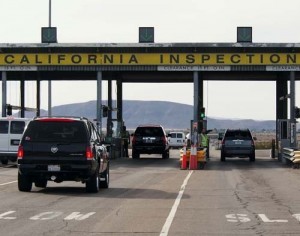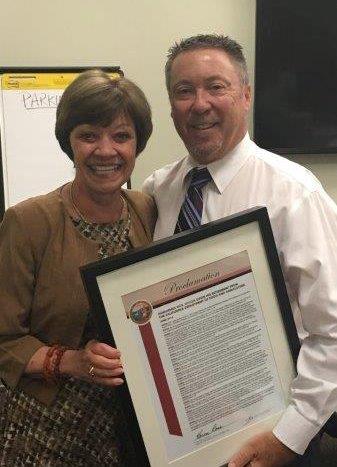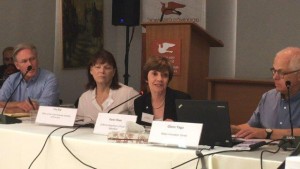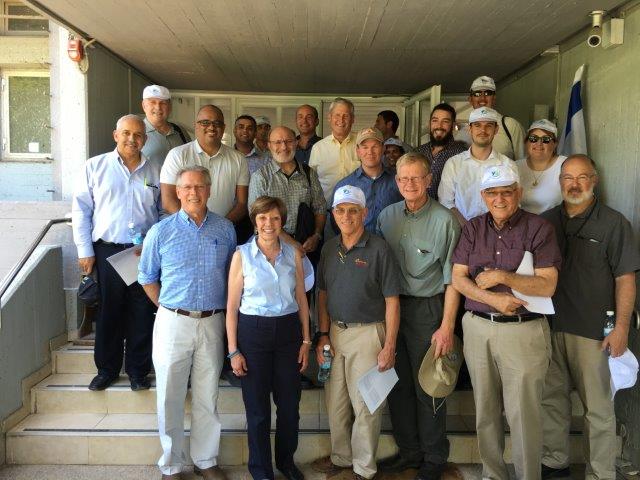By Chris Mooney
In a surprising new study, Stanford researchers have found that drought-ravaged California is sitting on top of a vast and previously unrecognized water resource, in the form of deep groundwater, residing at depths between 1,000 and nearly 10,000 feet below the surface of the state’s always thirsty Central Valley.
The resource amounts to 2,700 billion tons of freshwater, mostly less than about 3,250 feet deep, according to the paper published Monday in the influential Proceedings of the National Academy of Sciences. And there is even more fresh or moderately salty water at more extreme depths than this that could potentially be retrieved and desalinized someday for drinking water, or for use in agriculture.
“There’s a lot more fresh groundwater in California than people know,” said Stanford’s Rob Jackson, who conducted the research with the university’s Mary Kang, the study’s lead author. “It’s like a savings account. We can spend it today, or save it for when we really need it….There’s definitely enough extra groundwater to make a difference for the drought and farmers.”
But two other groundwater researchers contacted by the Post questioned aspects of the findings, or their framing, suggesting that the freshwater portion of the resource may already have been used, or that its existence would do little to change California’s water plight. The response suggests the new research could prove controversial among scientists trying to interpret what it means for a state that has battled over water, and its distribution, going back many decades.
The problem is the type of water involved: groundwater, which accounts for 95 percent of the planet’s freshwater that is not contained polar glaciers and ice sheets. This is the water originating as rain and snow that does not end up in lakes or rivers, or getting drawn up by plants. Instead, it slowly penetrates ever deeper into the ground, so long as there are still cavities that can hold it.
The vast groundwater resource at question in the study is, in many cases, very deep — and the deeper in the ground it lies, the more likely it is to be salty. The resource’s huge size, Jackson said, is related to the mountainous terrain — water cascades off mountains and pools in deep underwater pockets over very long periods of time.
But extracting this deep groundwater could be expensive and would run the risk of causing considerable land subsidence, as the empty cavities that once held it collapse. It would also mostly be a one-time fix, according to Jackson: The deep groundwater resource would not replenish for hundreds to thousands of years.
And perhaps most troubling of all — oil and gas companies, whose data provided the basis for the discovery, may already be despoiling some of this water with their activities, the research suggests.
The new study “improves the estimates for the total possible volume of groundwater, and how deep it is, and a little bit about its quality, primarily salinity,” said Peter Gleick, a water resources expert and president of the Pacific Institute, who also edited the study for the journal. “But it doesn’t say anything about whether that stuff’s going to be economic to pump, or sustainably managed in the long run, or an important contributor to solving our water problems. Those are unresolved issues still.”
To uncover the new finding, Jackson and Kang pored over data reported by what Jackson calls “really the only industry that cores deeply into the Earth” — oil and gas. The researchers say that they examined data from nearly 35,000 wells, as well as 938 “oil and gas pools,” spread across eight counties in the Central Valley and beyond.
The study then extrapolated for the entire Central Valley. Most pertinently, it found 2,200 billion tons of fresh and somewhat salty water within about 3,000 feet of the surface, making it the most accessible.
Still, the study suggests that desalinating this water would actually be cheaper than withdrawing larger amounts of salt from seawater, as a new California desalination plant in the San Diego area has begun to do.
At the same time, the research also wades deeply into ongoing social and political controversy by suggesting that there is likely to be at least some overlap between oil and gas extraction activities in the state, and these previously unknown deep groundwater repositories. And here the research is singling out not only hydraulic fracturing or fracking, but also the practice of wastewater disposal in deep geological reservoirs.
“Oil and gas activities happen a lot out West directly into and around freshwater aquifers,” Jackson said. “And there aren’t any restrictions to that practice.”
To be clear, Jackson is merely noting this risk — he is not asserting that any specific damage has been done. While some deep or shallow freshwater in the Central Valley may have been contaminated, he said, “I think most of it is fine. But I don’t really know.”
In a statement, Sabrina Lockhart, communications director for the California Independent Petroleum Association, countered that “It is not accurate to say that underground injection is not regulated.” Lockhart noted that wastewater injection wells require permits and state and EPA permission for siting, saying these regulators “have strict criteria that ensures that there is no harm to potential sources of drinking water.”
The new research prompted skeptical reactions from two researchers asked to comment by the Post.
“A lot of the water that they’re talking about may actually be gone, when you think about the Central Valley, right now, where the average depth of the water table is already at 2,500 or 3,000 feet,” said Jay Famiglietti, a water expert with both NASA’s Jet Propulsion Laboratory and the University of California, Irvine.
Famiglietti did agree about the deeper, saltier water sources, though, and praised the study for “highlighting that brackish groundwaters may eventually be an important water source.”
“Just because they’ve seen that the depth of freshwater in this basin is deeper than people thought, does not mean that you can go pump more freshwater out of this system at all. It unequivocally does not mean that,” added Graham Fogg, a hydrogeologist with the University of California-Davis. Fogg did not dispute the new study’s overall numbers, so much as whether the finding would be useful in the context of trying to supply more water to the state.
The problem, Fogg said, is that there is a difference between the amount of water that may exist below the ground and the amount that can be extracted either safely — without major ecological impact — or sustainably.
Stanford’s Jackson agreed that when it comes to replenishing of the deep groundwater resource, “very little of it, at that depth, is sort of immediate.” But he still thinks the state has an unexpected resource that it can now decide how to use — and manage.
“I hope it prompts a conversation about monitoring and safeguarding our groundwater,” Jackson said. “We’re lucky that we have more than we expected. Now we need to use it wisely and take care of it.”
Link to article











